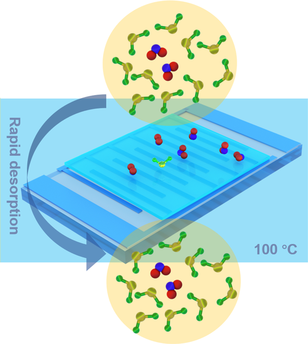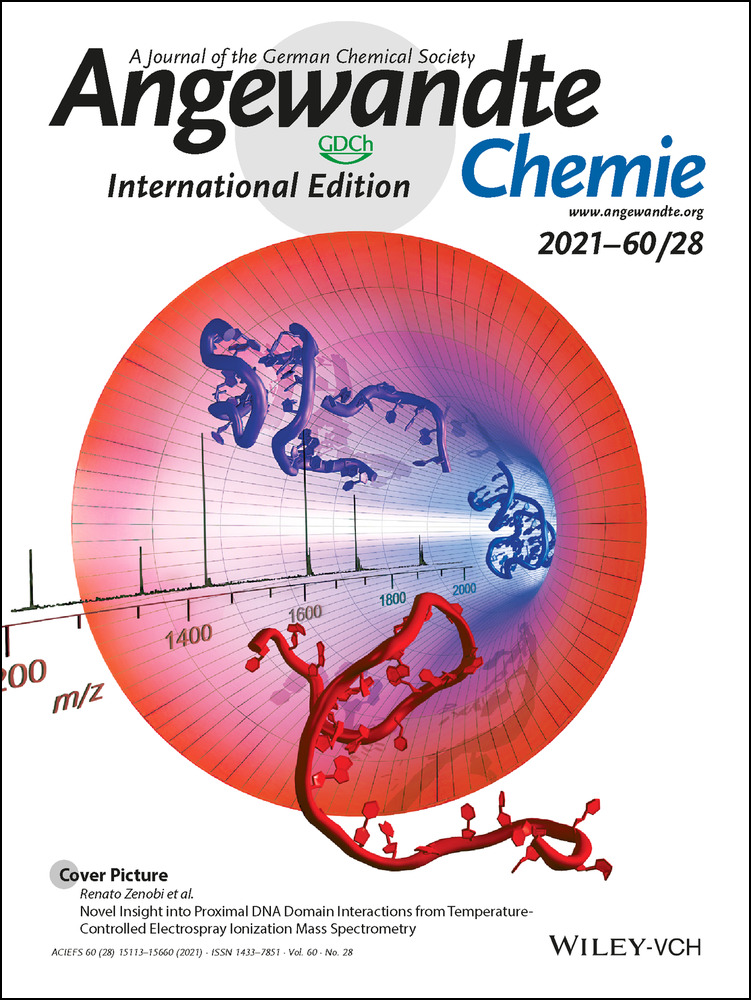An Ion-In-Conjugation-Boosted Organic Semiconductor Gas Sensor Operating at High Temperature and Immune to Moisture
Graphical Abstract
A robust NO2 sensor device based on an ion-in-conjugation structure maintained its performance at high temperature, which counteracted the effects of humidity (see picture; NO2 blue/red, H2O green/yellow). Charge transfer between NO2 and the chemiresistor was more efficient at 100 °C than at room temperature. The fabricated sensor had a parts-per-billion (ppb) NO2 detection limit and showed the highest sensitivity of all reported NO2 chemiresistive sensors.
Abstract
Organic electrical gas sensors have been developed for many decades because of their high sensitivity and selectivity. However, their industrialization is severely hindered by their intrinsic humidity susceptibility and poor recovery. Conventional organic sensory materials can only operate at room temperature owing to their weak intermolecular interactions. Herein, we demonstrate using a croconate polymer (poly-4,4′-biphenylcroconate) that the “ion-in-conjugation” concept enables organic gas sensors to operate at 100 °C and 70 % relative humidity with almost complete recovery. The fabricated sensor had a parts-per-billion (ppb) detection limit for NO2 and showed the highest sensitivity (2526 ppm−1 at 40 ppb) of all reported NO2 chemiresistive sensors. Furthermore, charge transfer increased with temperature. Theoretical calculations and in situ FTIR spectra confirmed the ion-in-conjugation-inspired hydrogen bond as key for excellent sensitivity. A NO2 alarm system was assembled to demonstrate the feasibility of this sensor.





